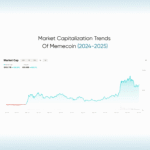In the ever-evolving landscape of finance, technological advancements have become the driving force behind significant shifts in asset prices. From traditional investments to the emergence of digital assets, the journey has been nothing short of transformative.
Join us as we unravel the profound impact of technology on asset valuation and explore the dynamic world of finance through a lens of innovation and opportunity.
The Dawn of Digital Assets: A Historical Perspective
The history of finance is punctuated by revolutionary moments, and the advent of digital assets marks a significant turning point. It all began with the inception of Bitcoin in 2009, a groundbreaking cryptocurrency that introduced the world to the concept of decentralized digital currency. Bitcoin’s creation paved the way for a plethora of other digital assets, each with its own unique value proposition and use case.

Over the years, digital assets have proliferated, encompassing but not limited to a diverse array of cryptocurrencies, stablecoins, and non-fungible tokens (NFTs). Ethereum, launched in 2015, introduced smart contracts and paved the way for decentralized applications (dApps), further expanding the possibilities within the digital asset ecosystem. As the timeline unfolds, we witness the rise of alternative coins (Altcoins), challenging the dominance of major cryptocurrencies, offering investors a broader spectrum of investment opportunities.
Want to learn more about digital assets? Click here(Link to PB3 “Market Trends 2024: Insight into Cryptocurrency Market Movements and Global Adoption”)
Understanding Asset Prices

Asset prices refer to the monetary value assigned to various financial instruments, commodities, or properties in the market. These prices are influenced by a multitude of factors that reflect the complex interplay of supply and demand dynamics, investor sentiment, and macroeconomic conditions.
· The Role of Supply and Demand
One primary factor influencing asset prices is supply and demand. When the demand for a particular asset outweighs its supply, its price tends to rise, reflecting the perceived scarcity and increasing desirability of the asset. Conversely, an oversupply relative to demand can lead to price depreciation as sellers compete to attract buyers.
· Impact of Investor Sentiment
Investor sentiment also plays a crucial role in determining asset prices. Market participants’ perceptions, emotions, and expectations can drive buying or selling behavior, causing asset prices to fluctuate. Fueled by optimism about future prospects or economic conditions, positive sentiment can bolster asset prices, while negative sentiment may lead to sell-offs and price declines.

· Macroeconomic Factors at Play
Moreover, macroeconomic factors such as interest rates, inflation, and economic growth exert significant influence on asset prices. Changes in monetary policy by central banks, geopolitical events, and regulatory developments can impact investor confidence and shape market trends, ultimately affecting asset valuations.
Redefining Asset Valuation: The Impact of Technological Innovation
Traditionally, asset valuation relied on conventional metrics and methodologies, often limited by geographic boundaries and regulatory frameworks. However, the integration of technology has revolutionized this process, introducing new paradigms and approaches to assessing asset prices.
One notable example is the application of Blockchain technology in asset valuation. By leveraging distributed ledger technology, Blockchain ensures transparency, immutability, and enhanced security in transactions, thereby instilling greater confidence in the valuation process.
Additionally, the emergence of decentralized finance (DeFi) platforms has democratized access to financial services, enabling individuals to participate in lending, borrowing, and trading without intermediaries.
Moreover, the proliferation of data analytics and machine learning has empowered investors with unprecedented insights into market trends and dynamics. Hedge fund companies now utilize sophisticated algorithms and predictive models to conduct performance analysis and investor relations, enhancing decision-making processes and optimizing portfolio management strategies.
Limitations and Future Prospects: Navigating the Road Ahead
Despite the remarkable progress, challenges persist in the world of digital asset valuation. Regulatory uncertainty, market volatility, and cybersecurity threats pose significant hurdles to widespread adoption and acceptance. Moreover, the nascent nature of digital assets necessitates continuous innovation and adaptation to address evolving market dynamics.
Looking ahead, the future holds promise for further advancements in technology-driven asset valuation. As Blockchain technology matures and regulatory frameworks evolve, we can expect greater standardization and interoperability within the digital asset ecosystem. Additionally, ongoing research and development efforts in areas such as decentralized finance (DeFi) and non-fungible tokens (NFTs) will continue to expand the horizons of investment opportunities.
Partnering for Prosperity with Kenson Investments
In this dynamic finance landscape, Kenson Investments stands as a beacon of innovation and transparency, offering unparalleled opportunities for individuals and enterprises alike. With a seasoned team of professionals and a commitment to excellence, Kenson Investments provides strategic advisory and technical consulting services along with multiple investment options tailored to the digital asset market.
Whether you’re seeking short-term gains or long-term growth, Kenson Investments empowers you to navigate the complexities of digital asset investments with confidence and assurance.
Contact Kenson Investments today to unlock the potential of digital assets and embark on a path toward financial prosperity.
Disclaimer: The content provided on this blog is for informational purposes only and should not be construed as financial advice. The information presented herein is based on personal opinions and experiences, and it may not be suitable for your individual financial situation. We strongly recommend consulting with a qualified financial advisor or professional before making any financial decisions. Any actions you take based on the information from this blog are at your own risk.














